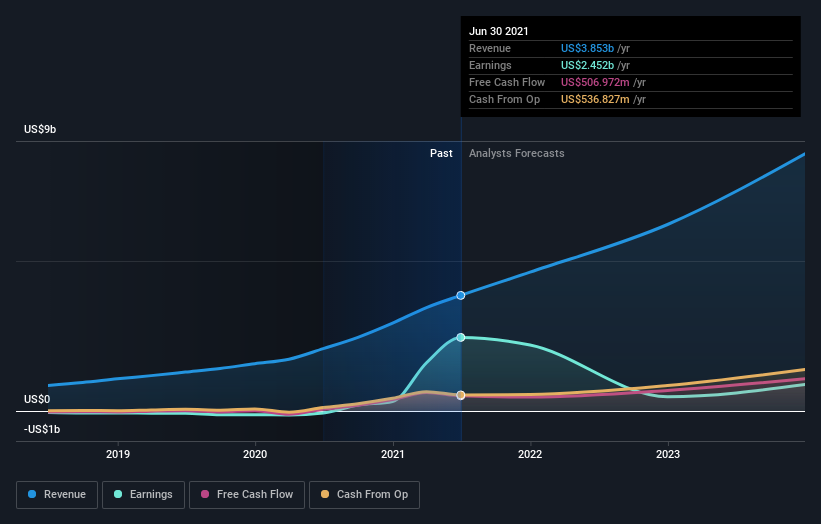Should You Investigate Shopify Inc. (NYSE:SHOP) At US$1,497?
Shopify Inc. (NYSE:SHOP) saw a double-digit share price rise of over 10% in the past couple of months on the NYSE. As a large-cap stock with high coverage by analysts, you could assume any recent changes in the company’s outlook is already priced into the stock. But what if there is still an opportunity to buy? Let’s examine Shopify’s valuation and outlook in more detail to determine if there’s still a bargain opportunity.
See our latest analysis for Shopify
What is Shopify worth?
Shopify is currently expensive based on my price multiple model, where I look at the company's price-to-earnings ratio in comparison to the industry average. I’ve used the price-to-earnings ratio in this instance because there’s not enough visibility to forecast its cash flows. The stock’s ratio of 76.39x is currently well-above the industry average of 34.65x, meaning that it is trading at a more expensive price relative to its peers. If you like the stock, you may want to keep an eye out for a potential price decline in the future. Since Shopify’s share price is quite volatile, this could mean it can sink lower (or rise even further) in the future, giving us another chance to invest. This is based on its high beta, which is a good indicator for how much the stock moves relative to the rest of the market.
What does the future of Shopify look like?
Future outlook is an important aspect when you’re looking at buying a stock, especially if you are an investor looking for growth in your portfolio. Although value investors would argue that it’s the intrinsic value relative to the price that matter the most, a more compelling investment thesis would be high growth potential at a cheap price. However, with an extremely negative double-digit change in profit expected over the next couple of years, near-term growth is certainly not a driver of a buy decision. It seems like high uncertainty is on the cards for Shopify, at least in the near future.
What this means for you:
Are you a shareholder? If you believe SHOP should trade below its current price, selling high and buying it back up again when its price falls towards the industry PE ratio can be profitable. Given the uncertainty from negative growth in the future, this could be the right time to reduce your total portfolio risk. But before you make this decision, take a look at whether its fundamentals have changed.
Are you a potential investor? If you’ve been keeping tabs on SHOP for some time, now may not be the best time to enter into the stock. The price has climbed past its industry peers, in addition to a risky future outlook. However, there are also other important factors which we haven’t considered today, such as the track record of its management. Should the price fall in the future, will you be well-informed enough to buy?
If you want to dive deeper into Shopify, you'd also look into what risks it is currently facing. When we did our research, we found 4 warning signs for Shopify (2 are potentially serious!) that we believe deserve your full attention.
If you are no longer interested in Shopify, you can use our free platform to see our list of over 50 other stocks with a high growth potential.
This article by Simply Wall St is general in nature. We provide commentary based on historical data and analyst forecasts only using an unbiased methodology and our articles are not intended to be financial advice. It does not constitute a recommendation to buy or sell any stock, and does not take account of your objectives, or your financial situation. We aim to bring you long-term focused analysis driven by fundamental data. Note that our analysis may not factor in the latest price-sensitive company announcements or qualitative material. Simply Wall St has no position in any stocks mentioned.
Have feedback on this article? Concerned about the content? Get in touch with us directly. Alternatively, email editorial-team (at) simplywallst.com.

 Yahoo Finance
Yahoo Finance 
